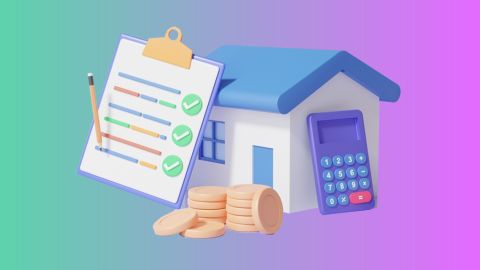Mortgage-Backed Securities (MBS) are financial instruments that connect the real estate and investment sectors. They are formed by pooling together multiple home loans or real estate debts, which are then packaged into tradable securities and sold to investors. These investors earn regular income through the principal and interest payments made on the underlying loans.
MBS not only provide a steady income source for investors but also help financial institutions free up capital, manage risk exposure, and enhance liquidity. They play a crucial role in sustaining the housing finance ecosystem by enabling continuous lending. For investors seeking stable, long-term returns, or borrowers considering options like a loan against property, understanding how MBS function is essential to making informed financial decisions.
What are mortgage backed securities?
Mortgage-Backed Securities (MBS) are investment instruments similar to bonds. Each security represents a share in a pool of home loans or real estate-backed debts purchased from banks or government institutions. Investors in MBS receive regular payments derived from the principal and interest collected on these loans, much like coupon payments on traditional bonds.
In the case of a loan against property, a similar securitisation model can apply. Financial institutions often bundle multiple property-backed loans into investment products, enabling them to manage risk efficiently and maintain liquidity for future lending. For borrowers, a loan against property serves as an effective way to unlock the value of their real estate to meet immediate financial needs, turning a static asset into an active financial resource. You can even check the loan eligibility in just seconds to get started!
MBS are thus created when lenders combine individual mortgage loans and sell them collectively to investors. These securities are supported by the cash flows from the underlying mortgages, including both principal and interest payments made by homeowners, offering investors a predictable income stream and financial institutions a sustainable lending cycle.
How do mortgage-backed securities work?
To understand how mortgage-backed securities work, it helps to look at the step-by-step process behind their creation.
Origination: Banks and NBFCs provide home loans to borrowers, with the purchased properties serving as collateral for these mortgages.
Pooling: The financial institutions then group multiple mortgages that share similar features such as loan tenure, interest rate, and repayment structure.
Securitisation: These pooled mortgages are sold to a trust or special purpose vehicle (SPV), which may be managed by a government-backed enterprise or a private entity. The trust converts these loans into tradable securities—known as MBS.
Issuance: The MBS are issued and offered to investors. Agency-backed MBS are guaranteed by government organisations, providing an additional layer of security.
Servicing: A mortgage servicer manages the collection of monthly repayments from borrowers and ensures that principal and interest payments are passed on to MBS investors.
Investment: Investors buy these MBS, indirectly lending funds to homebuyers. In return, they receive regular payments drawn from the mortgage pool’s cash flows, consisting of both principal and interest components.
Purpose of MBS
Mortgage-Backed Securities (MBS) serve different objectives for lenders and investors within the financial system.
For Lenders: MBS enable financial institutions to sell their existing mortgage loans, freeing up capital to issue new loans. This enhances liquidity and allows lenders to expand their lending capacity.
For Investors: MBS provide investors with an opportunity to participate in the real estate market without directly owning property. They earn regular income from the interest and principal payments of the underlying mortgage pool.
Types of mortgage backed securities
There are several types of mortgage-backed securities, including:
Pass-through securities: These securities pass through the principal and interest payments from the underlying mortgage loans directly to the investors.
Collateralised mortgage obligations (CMOs): CMOs divide the cash flows from the underlying mortgage loans into multiple tranches, each with different risk and return characteristics.
Stripped mortgage-backed securities: These securities separate the principal and interest payments of the underlying mortgage loans into different securities, catering to investors with specific preferences for cash flow timing.
Advantages of investing in mortgage-backed securities
Investing in mortgage-backed securities (MBS) offers several advantages:
Stable cash flows: MBS provides a steady stream of income through the interest and principal payments from mortgage loans.
Diversification: MBS allows investors to diversify their portfolios by gaining exposure to the real estate market without directly owning property.
Relative safety: MBS issued by government-sponsored entities or reputable financial institutions are often considered relatively safe investments due to their backing.
Risks associated with mortgage-backed securities
Like most investment instruments, Mortgage-Backed Securities (MBS) carry certain risks that can influence returns and market value.
Interest rate risk: Changes in interest rates can alter homeowner repayment behaviour, affecting the timing and amount of cash flows to MBS investors.
Credit risk: Defaults on the underlying mortgage loans, particularly in subprime or non-conforming segments, can lead to losses for investors.
Prepayment risk: Borrowers may choose to repay or refinance their mortgages early, disrupting expected cash flows and reducing potential returns.
Extension risk: When interest rates rise, fewer homeowners refinance, which can extend the duration of the MBS and impact liquidity.
Market and liquidity risk: Price volatility and limited liquidity in certain types of MBS can make them harder to trade during market stress.
Key players in the mortgage-backed securities market
The mortgage-backed securities market involves various participants, including:
Mortgage originators: These are financial institutions that originate and underwrite mortgage loans.
Government-backed entities: In India, entities like the National Housing Bank (NHB) play a significant role in the MBS market by purchasing, guaranteeing, and securitising mortgage loans.
Investors: Institutional investors, such as pension funds, mutual funds, and insurance companies, are major participants in the MBS market, seeking to earn returns on their investments.
MBS and the 2008 Financial Crisis
Mortgage-Backed Securities (MBS) played a major role in triggering the 2008 global financial crisis. The inclusion of high-risk subprime mortgages in MBS pools led to widespread defaults when borrowers were unable to meet repayment obligations. As a result, investors suffered heavy losses, and the ripple effect severely impacted global financial markets.
The crisis exposed weaknesses in credit assessment and risk management practices, prompting governments and regulators to introduce stricter guidelines for mortgage lending, securitisation, and investor protection within the MBS market.
How to invest in mortgage-backed securities?
Investors can access the mortgage-backed securities market through various channels, including:
Direct purchase: Investors can buy MBS directly from issuers or through brokerage firms.
Exchange-traded funds (ETFs): ETFs provide a convenient way to invest in a diversified portfolio of MBS, offering liquidity and transparency.
Mutual funds: Mutual funds specialising in MBS offer investors professional management and diversification across a range of mortgage-backed securities.
Consider Bajaj Finserv Loan Against Property
Loans against property (LAP) serve as a crucial component within the realm of mortgage-backed securities, contributing to the pool of underlying assets that back these securities. Institutions like Bajaj Finance offer LAP facilities, providing borrowers with the opportunity to unlock the value of their property assets for various financial needs. Bajaj Finserv Loan Against Property provides several benefits to its customers, including competitive interest rates, flexible repayment options, and quick approval processes. Here is why one should apply for a loan against property with Bajaj Finance:
Our loan against property application process for loans against property is streamlined for efficiency and clarity, ensuring a seamless experience. Simply apply online, and upon document verification, expect approval within 72 hrs.
Tailored to your needs, our loans against property offer personalised solutions, allowing flexibility in adjusting features such as loan amount and repayment period according to your unique requirements.
Benefit from competitive loan against property interest rates starting as low as 8% to 20%, giving you an advantage in managing your finances effectively.
Did you know you may be eligible for our loan against property offers with low-interest rates? Check your offer in just 2 clicks!
In conclusion, mortgage-backed securities (MBS) serve as a vital link between real estate and financial markets, facilitating efficient capital allocation and risk management. Through the securitisation of mortgage loans, MBS offers investors opportunities for income and portfolio diversification while providing borrowers with access to capital. Despite the benefits, it is crucial to acknowledge the associated risks such as interest rate fluctuations and credit risks. However, with careful consideration, investors can navigate these complexities and capitalise on MBS investments.
Moreover, with products like Bajaj Finserv Loan Against Property, borrowers can leverage their property assets efficiently. With streamlined processes, tailored solutions, competitive interest rates, and convenient top-up loan facilities, Bajaj Finance enhances the accessibility and appeal of mortgage-backed securities.




